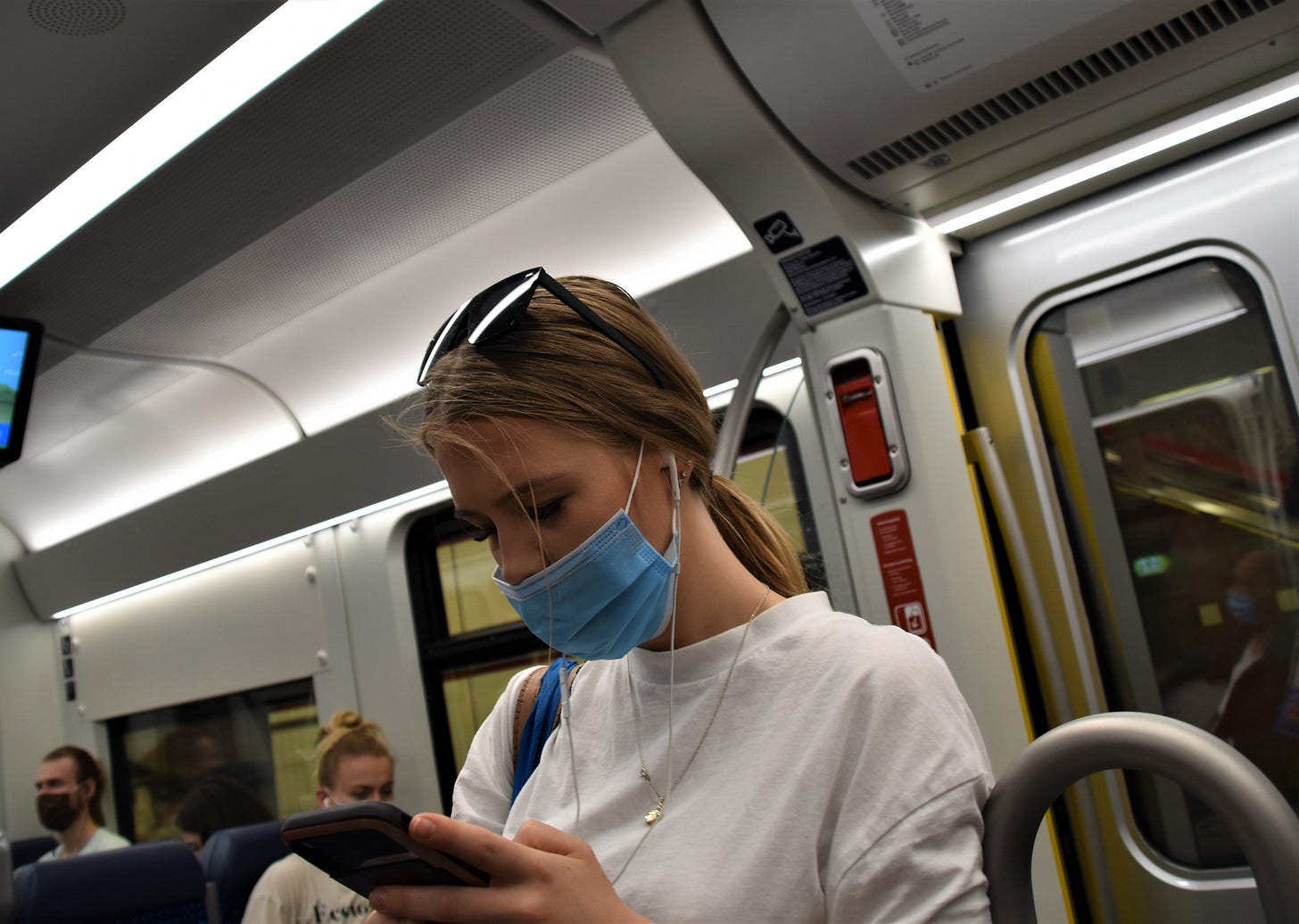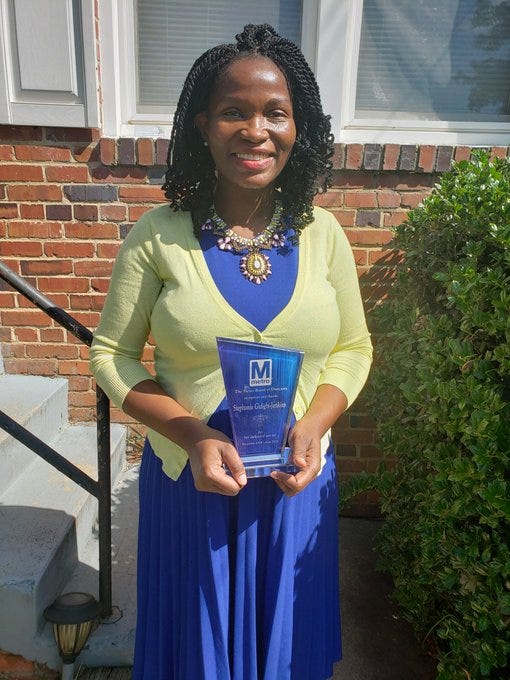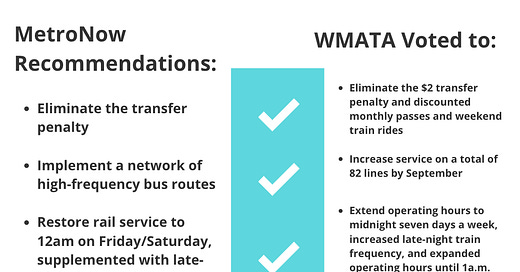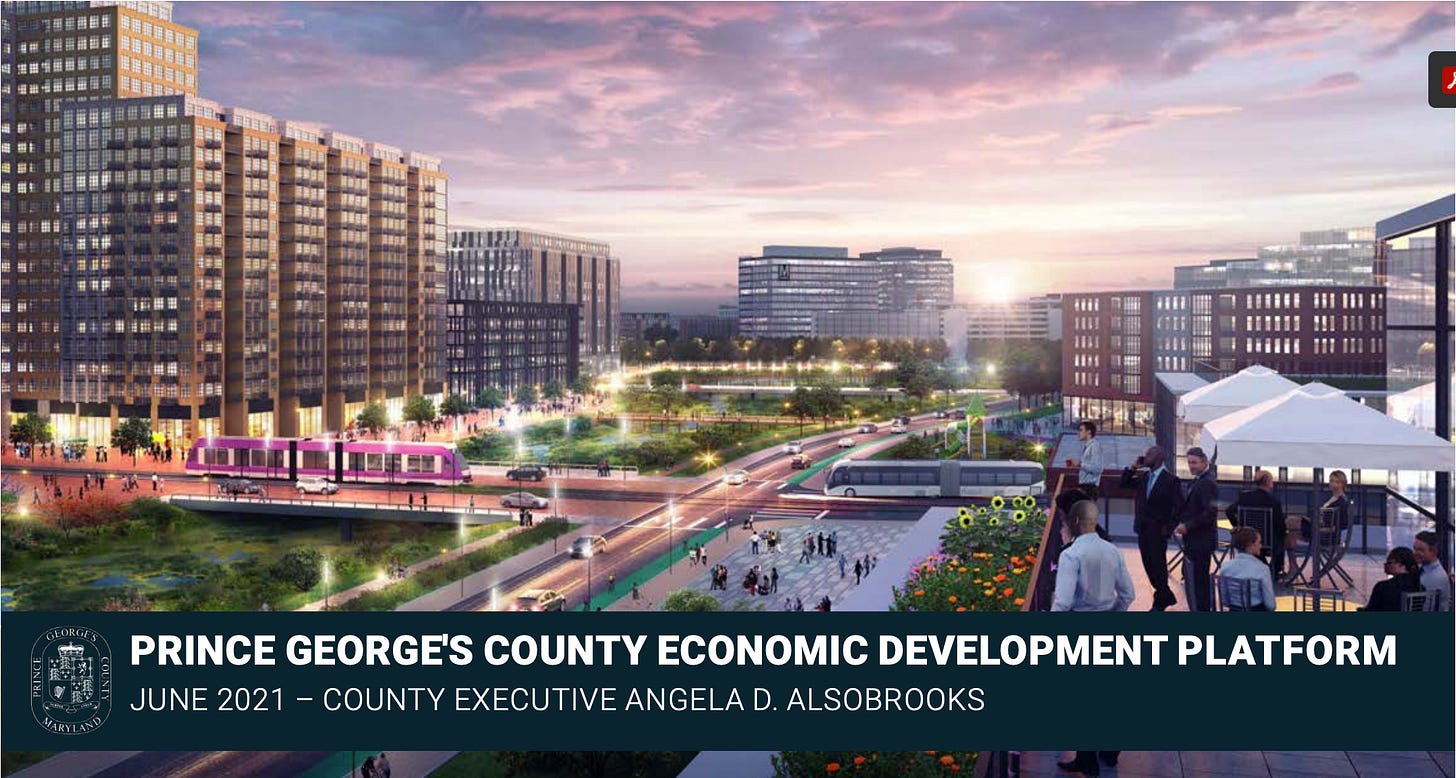MetroNow Dispatch 7.21
July's Dispatch highlights wins in WMATA’s service and fare changes, TransitCenter’s Equity Dashboard, Prince George’s County Executive Alsobrooks TOD Vision, and celebrates Stephanie Gidigbi Jenkins!
WMATA Board Adopts Several of the Recommend Service and Fare Changes
On June 10th, the WMATA Board adopted several key service and fare changes that will increase service, expand hours, and accelerate the regional economic recovery. Many of these changes were actively supported by MetroNow, and we thank the Board for their support. Never one to rest too long on our laurels, there is still work to be done to achieve our two guiding principles for this year’s budget: Making Equity the Cornerstone of Transit Recovery and Thinking Regionally Instead of Parochially. We’ve highlighted some of WMATA’s successes and a missed opportunity by comparing our recommendations to their approved changes.
Thank you WMATA Board for advancing better, more reliable, more equitable bus service which will be essential to our region’s recovery from the coronavirus pandemic. Now, as one region, let’s get to work on redesigning our regional bus network for the 21st century.
Read More:
Metro Board approves more service, later hours, and more convenient fare options as region reopens (WMATA, 6.10.21)
“The Board today voted to provide more frequent trains and buses, addresses the historic transfer fee to promote connecting from bus to rail, and includes special weekend fares that will encourage visitors and area families to take transit as they start traveling again,” said Board Chair Paul C. Smedberg.Metro Board Approves More All-Day Service, Later Hours, and $2 Weekend Fare In Pitch To Bring Back Riders (DCist 6.10.21)
Finance Committee Chair Steve McMillin: “This moves us to the recovery phase that delivers more frequent service, in more places, more affordably, for more riders.”WMATA’s transfer penalty finally gets the boot (Greater Greater Washington, 6.21.21)
“That’s why we call it a penalty: the current system makes it harder to take the journey that the transit system ostensibly ‘wants’ them to take (the efficient one), and that burden falls hardest on lower-income riders.”
If you’re commuting to work, don’t dread rush hour (yet)
By and large, crowded highways, buses, and metro cars have yet to return to their pre-pandemic peak hour madness. Research from the Instituto Tecnológico Autónomo de México, Stanford University, and the University of Chicago anticipates that workers will telework 20 percent of post-pandemic workdays, meaning there’s no time like the present to reevaluate what has historically been “the principle obsession of transportation planning in America”: rush hour.
If rush hour goes away, or even if it just spreads out over a longer period of time, we might be able rethink our infrastructure to make more space for transit prioritization including dedicated bus lanes and more room for walking, biking, and strolling. Building transportation infrastructure around rush hour commutes has historically prioritized white-collar office commuters coming downtown from the suburbs. Pivoting towards more frequent and reliable transit service at all hours of the day could better serve essential workers and capture more non-commute trips.
Read more:
A Little More Remote Work Could Change Rush Hour a Lot (New York Times 6.11.21)
“Peak commute time has long ruled our lives, our cities, our tax dollars. But it doesn’t have to.”My first day back at office: Easier commute, familiar faces and vacant cubicles (Washington Post 6.20.21)
“But this particular morning, I hit the road at 8 a.m. and made the 40-mile drive in 45 minutes. Wouldn't it be nice, I mused, if it could always be like this, with most workers commuting only as needed, rather than to meet arbitrary employer expectations, minimizing congestion for everyone.”
More transit service is an equity solution

TransitCenter’s newly launched Equity Dashboard highlights why providing more service is a key tool to creating a more equitable region. The dashboard analyzes how well transit provides access to important locations like worksites, grocery stores, and hospitals. TransitCenter found that job access during the pandemic shifted parallely across racial groups. While people of color, who are overrepresented in essential services and account for 61% of non-essential, non-remote workers, continued to commute during the pandemic, they experienced similar cuts in transit access as white suburban riders who often worked from home during the pandemic.
The TransitCenter dashboard recommends that transit agencies adopt metrics around access-to-opportunity and focus on reducing gaps in access, which we can definitely get behind.
Read more:
Pandemic Cuts to Public Transit Persist in Major U.S. Cities (Bloomberg, 6.17.21) “As large portions of the workforce continue to telework, “we can expect that commute and travel patterns will be dif ferent for a long time,” [community and regional planning Professor Alex] Karner said. “Agencies should focus on people who continue to use transit to make systems that match their needs. That will be the key to an equitable recovery.””
Can Transit Prioritize Existing Riders and Attract New Riders?

While people’s transportation preferences are usually sticky, the pandemic has presented a rare opportunity for people to reconsider their preferred mode of travel. This presents a generational opportunity for public transit to attract both newcomers and returners. The measures adopted on June 10 have the potential to both improve service for today’s riders and attract new riders. However, the region should also look to agencies across the country who are exploring new ways to re/capture commuters including offering free rides, setting up a multimodal reward system, offering guaranteed rides home for regular riders, implementing contactless payment to increase safety and expediency, or even going totally fare free. We are excited to see WMATA’s mobile payment app launch on Android, and we encourage the board to explore innovative ideas on how to improve service for existing riders while also attracting new riders.
Read more:
US Public Transit Has Struggled to Retain Riders over the Past Half Century. Reversing This Trend Could Advance Equity and Sustainability. (Urban Institute, 6.25.21) “Since 1970, the number of US workers roughly doubled, increasing from 77 million to more than 150 million. But over the same period, the number of transit commuters increased by only about 1 million. Just 5 percent of workers now get to work by bus or train nationwide, compared with almost 9 percent a half century ago. Most people are driving instead.”
MARC, commuter buses to resume full service in late August; some MTA fare increases go into effect next week (The Baltimore Sun, 6.24.21) “‘Transit is a critical connector of jobs, schools, medical services and amenities, and this fare increase deferral will provide much-needed economic relief, especially to our transit-dependent riders,’ [Acting MTA chief Holly Arnold] said.”
Transit Champions of the Month: 🏆
Why pick just one when we have three incredible candidates to choose from. Congrats this month it goes to:
Prince George’s County Executive Angela Alsobrooks for Championing TOD
Our first transit champion of the Month is Prince George’s County Executive Angela Alsobrooks for prioritizing transit oriented development in her new economic agenda. Her vision includes expanding development along the Blue Line by creating new homes and offices, attracting private developers, and convincing the Washington Football Team to rebuild their stadium by Morgan Boulevard. She’s also pushing for infrastructure improvements along Central Avenue, such as wider sidewalks, new bike and bus lanes, and building the Central Avenue Connector bike and pedestrian trail.
Stephanie Gidigbi Jenkins for her service as WMATA Board Member

We want to thank Stephanie Gidigbi for her incredible work as a WMATA Board member. During her term, she was key to advancing the Transit Equity Framework, recommendations of the Bus Transformation Project and equitable changes in service and fares. As Ms. Gidigbi moves on from the board, the MetroNow coalition looks forward to continuing to champion her efforts for more equitable, sustainable transit in our region.
Amazon’s Investment, with WMATA, to Create 1,000 Affordable Transit Accessible Housing Units in the Next 5-Years
Amazon and WMATA announced that they’ve partnered to create 1,000 new affordable housing units near Metro Stations throughout the region. With a $125 million grant from Amazon to provide below-market capital to support more affordable housing in the joint development projects between WMATA and developers near stations. Amazon’s investment is part of their $2 billion+ Housing Equity Fund, and will be granted to minority-led developers. While this is a huge win for the region, we need more partners to step up to the plate to reach the region’s housing production goals set by the Metropolitan Washington Council of Governments in 2019. The question we are asking ourselves is, Who’s Next?
Read More:
Exclusive: Angela Alsobrooks puts Prince George's Blue Line stations at the top of her economic agenda (Washington Business Journal 6.9.21) “‘This is the next great frontier for us,’ Alsobrooks said.’ The Blue Line corridor is where all the action is right now, and I think it’s going to explode any minute.’”
Amazon and Metro Announce a $125 Million Commitment to Create 1,000 Affordable Housing Units at Metro Stations in the Washington, D.C. Metropolitan Area (6.16.21) “This unique transit-oriented development approach to affordable housing promotes diverse, connected, and sustainable communities.”
Event Invitation: Better Buses for Prince George’s County

Join us for a discussion with local and regional bus experts to understand where we are and where we want to be with Prince George’s bus service. Speakers:
Anthony Foster, Chief, Transit Planning, Prince George’s County Department of Public Works & Transportation
James Hamre, Director, Office of Bus Planning and Scheduling, Washington Metropolitan Area Transit Authority
John Hillegass, Manager, Regional Mobility & Infrastructure, Greater Washington Partnership
This event is co-sponsored by: RISE Prince George’s and Coalition for Smarter Growth
Event Date: Jul 20, 2021 07:00 PM
Subscribe + Share!
Sharing is caring! Share the MetroNow Dispatch with any friends, colleagues, or family members who want to join us for the ride!
Follow @MetroNow on Twitter for daily tidbits of transit gold.
Reach out to us directly with any feedback, hot takes, or ideas for future newsletter topics: info@metronow.com
The MetroNow Coalition is made up of regional leaders from the business, non-profit, and advocacy communities who believe that transit is designed to bring us together —at work, school, and play. Today, we believe our collective advocacy for better transit for the Washington DC region is more important than ever.
We launched theMetroNow Dispatch to bring residents, leaders, and transit agencies together to think about how we can make better transit today, during the pandemic, and “tomorrow,” as we look beyond recovery to how we can build a more equitable, sustainable, and accessible transportation system for our region.






